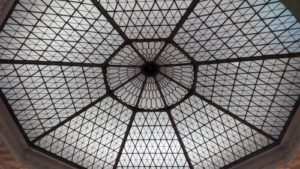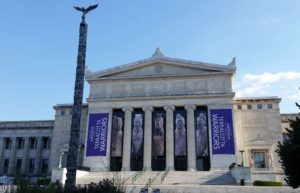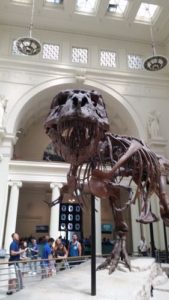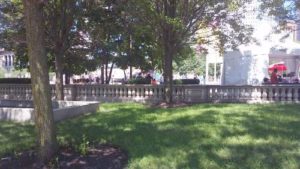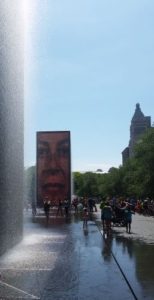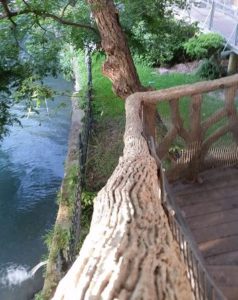I think I’ve been to the Adler Planetarium four times in my life. I remember going there once when I was quite young indeed and the planetarium show scared me. They were talking about the other planets and mentioned that the atmosphere of Jupiter was poisonous. I had uncorrected nearsightedness at that age* and the image that accompanied that statement looked frightening to me, like some kind of wall that was melting gruesomely. I sometimes wonder what that image actually was.
So, as a result, I wasn’t a fan until I got to be much older (and got glasses). I think we did one field trip there, but don’t quote me on that. The next time I am certain that we went was when I was in my teens or early twenties and the show was different. The one thing I came away with that time was that the Planetarium show was great, but that the building itself is very small, and the exhibits were not terribly exciting.
I returned again in August of 2016. There is a planetarium in Salt Lake City that Alex and I didn’t have a chance to visit, so I promised him a trip to the Adler during our Chicago trip. The building is much larger now. Well, they haven’t actually enlarged the building, because it’s a landmark, but they added a glassed-in portion that’s probably as large as the original building itself, plus it has several sublevels.
When we went, there were exhibits on telescopes, the nature of the universe, a model solar system that is beautiful but certainly didn’t look to scale to me. They also have a meteorite that you can touch. One can also see the oldest planetarium in the city, the Atwood Sphere, which dates from 1913 and has 692 holes drilled in it, each representing one of the brightest stars in the sky.
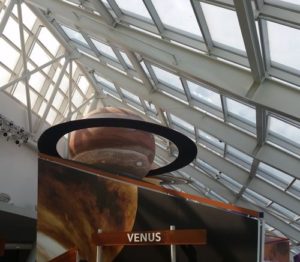
The Adler Planetarium was named for Max Adler, an executive at Sears Roebuck & Co. (presumably Adler was the “Co.”), who donated the money to build it. Adler had seen some planetaria in Europe and felt that the United States needed one. The planetarium opened in 1930 (so the Atwood Sphere obviously was somewhere else prior to that point; where, I don’t know).
So I was much more impressed by the Planetarium this time than last time. Alex and I were trying to cover a lot of territory in a short time, so we went to a show that was held in one of the sublevels and had a flat screen rather than a dome, so I owe him a dome planetarium show. Looks like San Antonio College has a planetarium show on Friday nights. I might be taking a Friday night off sometimes soon and then we’ll have a brand-new South Texas Destination to share.
And I think I’ve found where the Atwood Sphere has been all its life. It was originally housed in the Chicago Academy of Sciences museum. The museum was in the Matthew Laflin building in Lincoln Park until 1994. The sphere was moved to the Adler in 1995, and then in 1999 the Academy of Sciences museum moved to a new building, still in Lincoln Park, and was renamed the Peggy Notebaert Nature Museum.
So it looks like my next trip to Chicago (tentatively scheduled for 2019) will include the Notebeart museum in addition to the Chicago History Museum, the Oriental Institute Museum, and the Museum of Science and Industry.
*So here’s how it was discovered that I was nearsighted. I’d been telling people that my perceptions weren’t the same as theirs for years. As an example, I didn’t believe that the candles in a Catholic church were candles. They looked like the blinking lights like on the control panel of the Enterprise on Star Trek. After the service (wedding?) my mom took me up to see that they were, in fact, candles.
I guess my parents chalked things like this up to imagination and it didn’t occur to my parents that this “imagination” that I had was nearsightedness until we went to the circus in 1973. We were waiting for it to start and I asked them what time it was and they both said, “You can’t see the clock?” I couldn’t. They indicated that it was on the wall and I looked way up and down the amphitheater (or was it the Coliseum? No, I’m pretty sure it was the Amphitheater.**). No clock. Finally my mom put her opera glasses in front of my face and adjusted until the clock came into focus. It had been right in font of me the whole time.
** I checked with my dad and, in a surprise come-from-behind victory, it was the Chicago Stadium.

